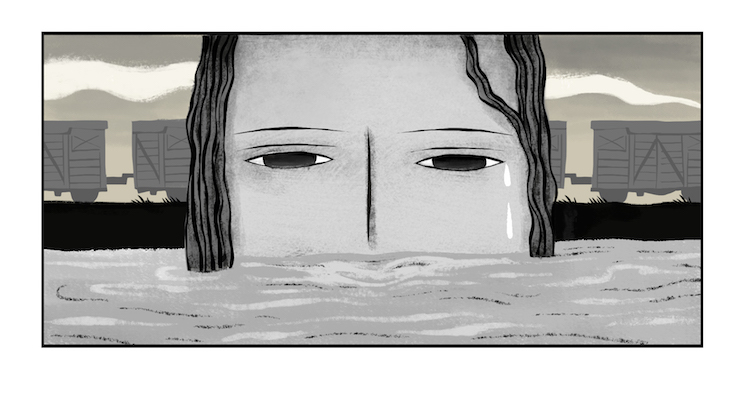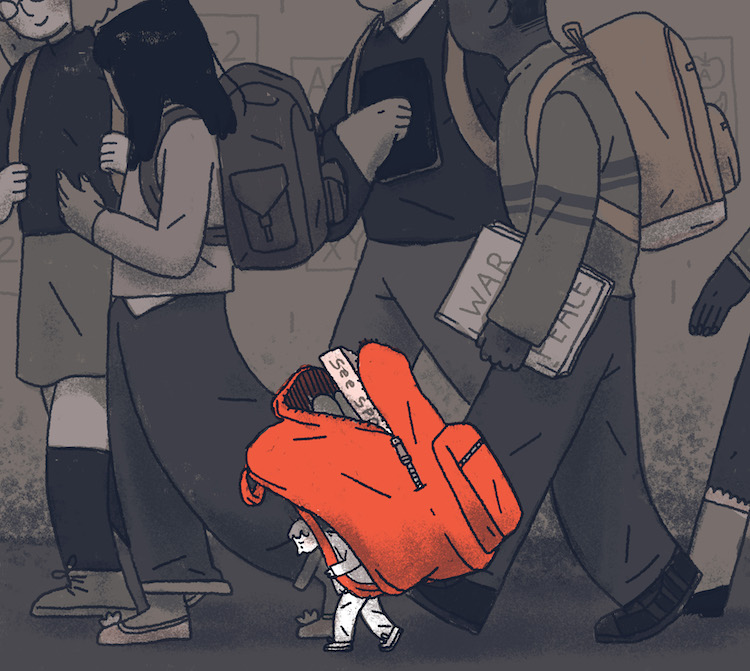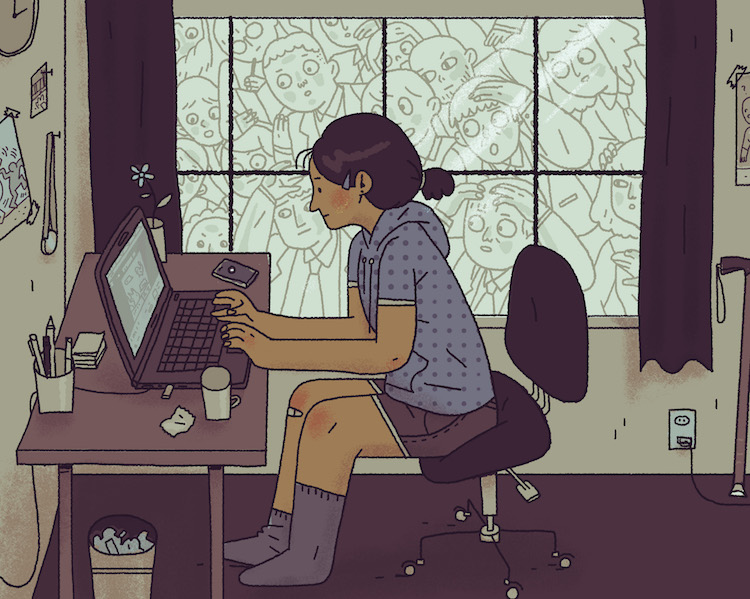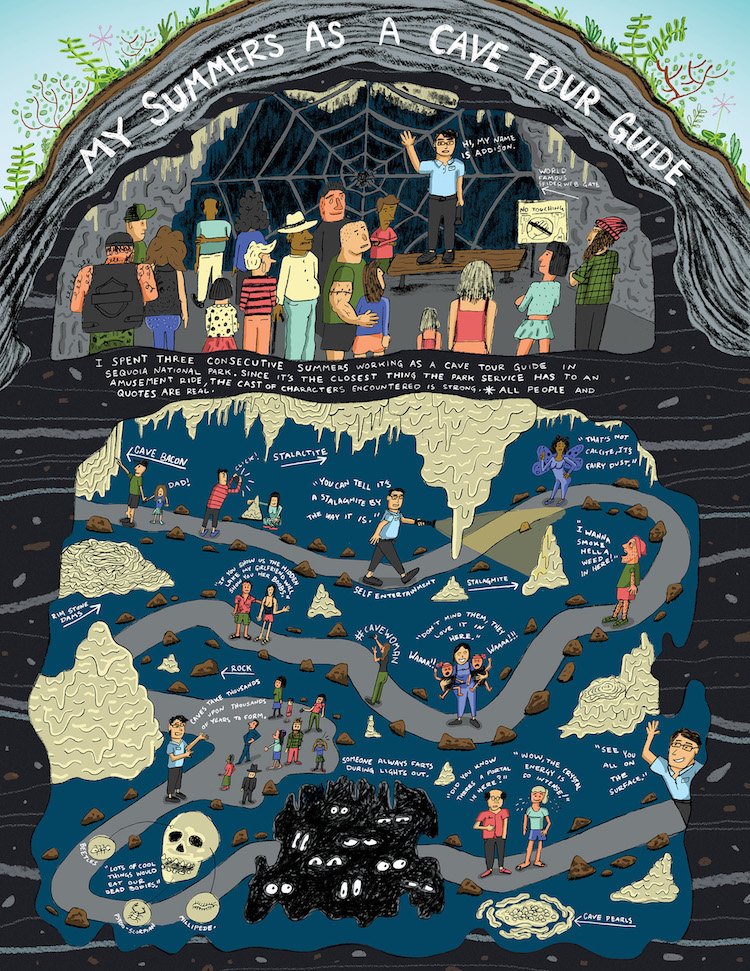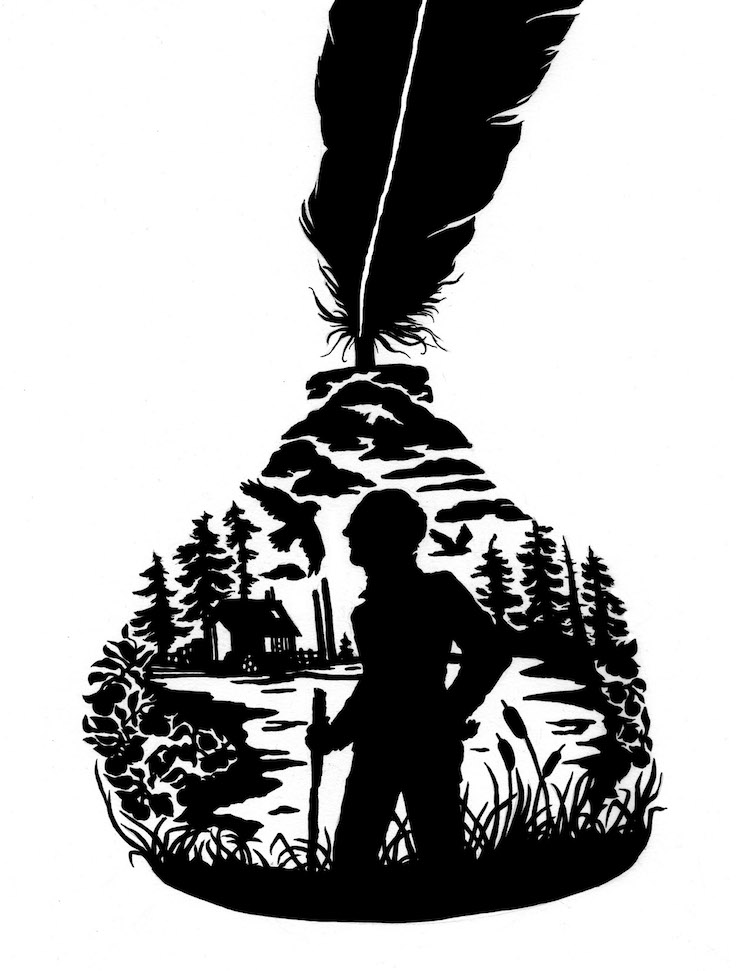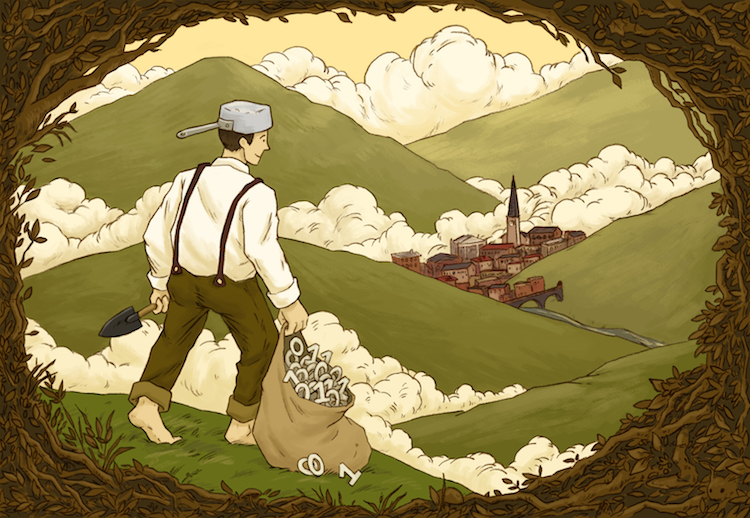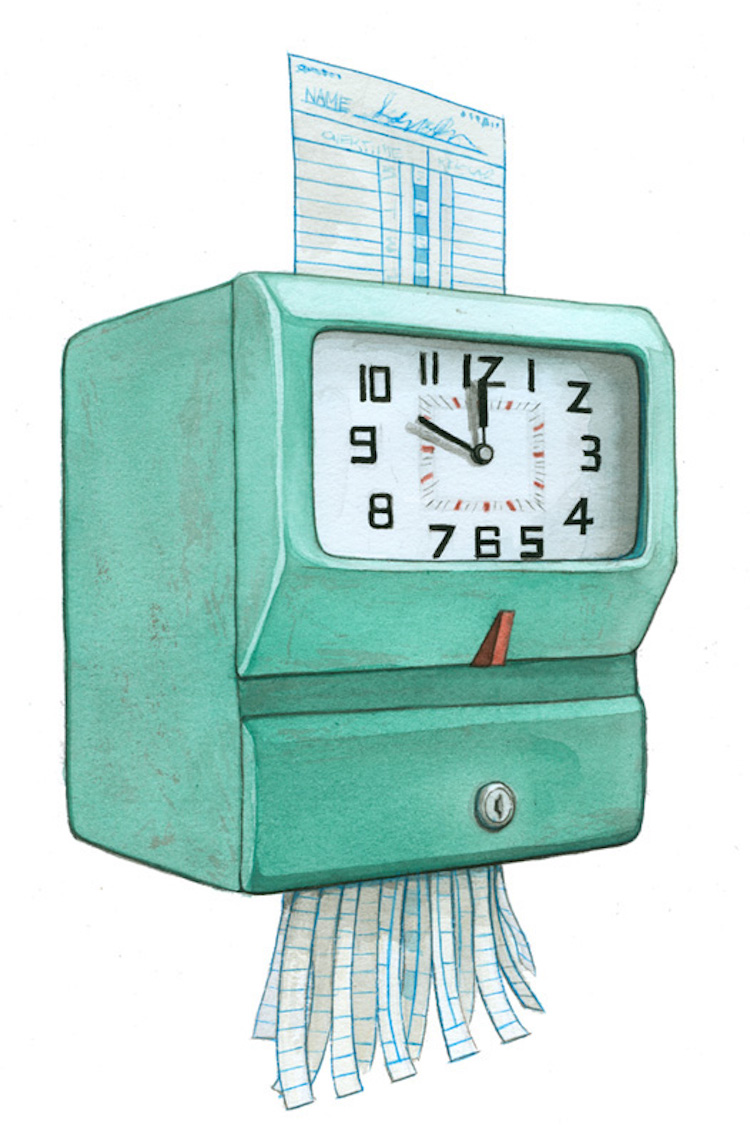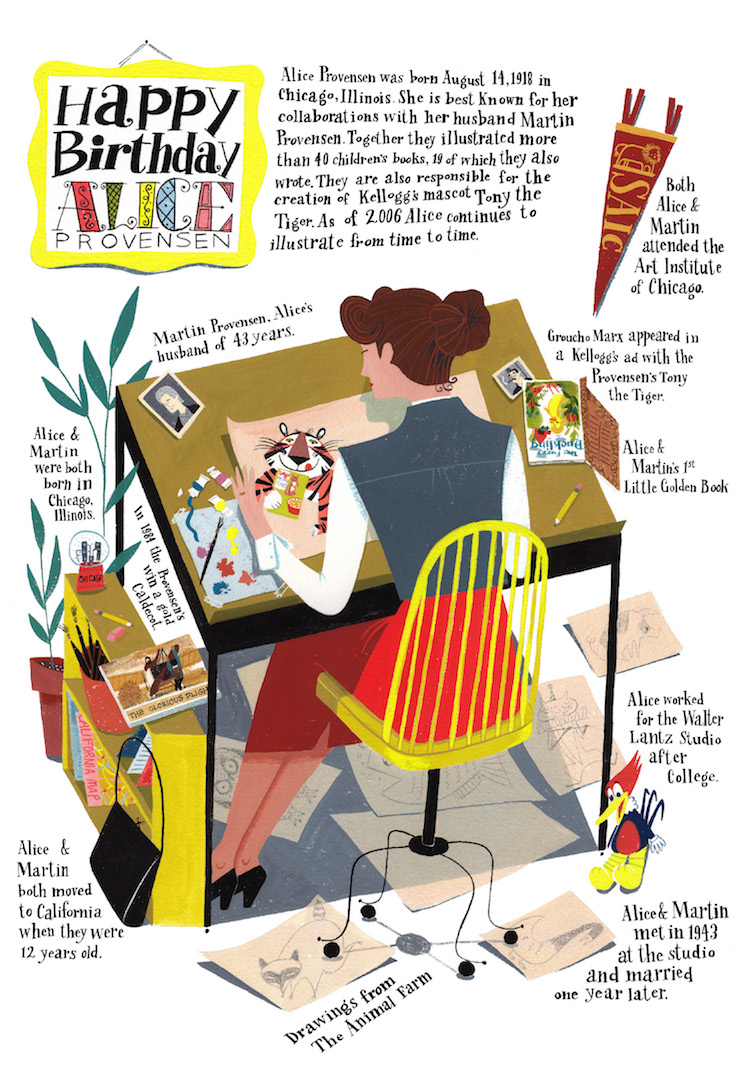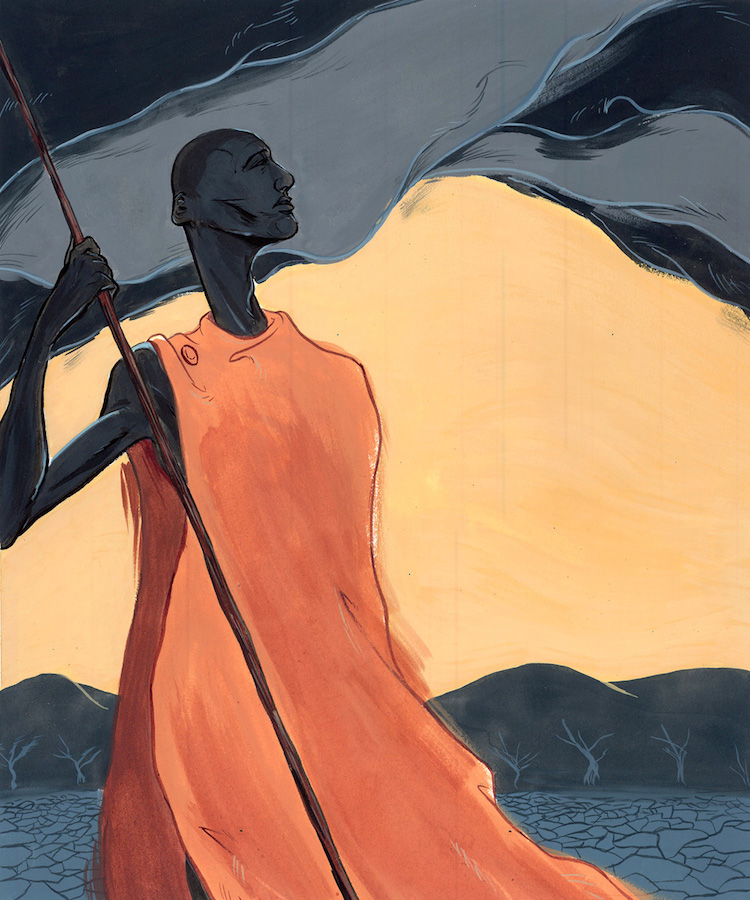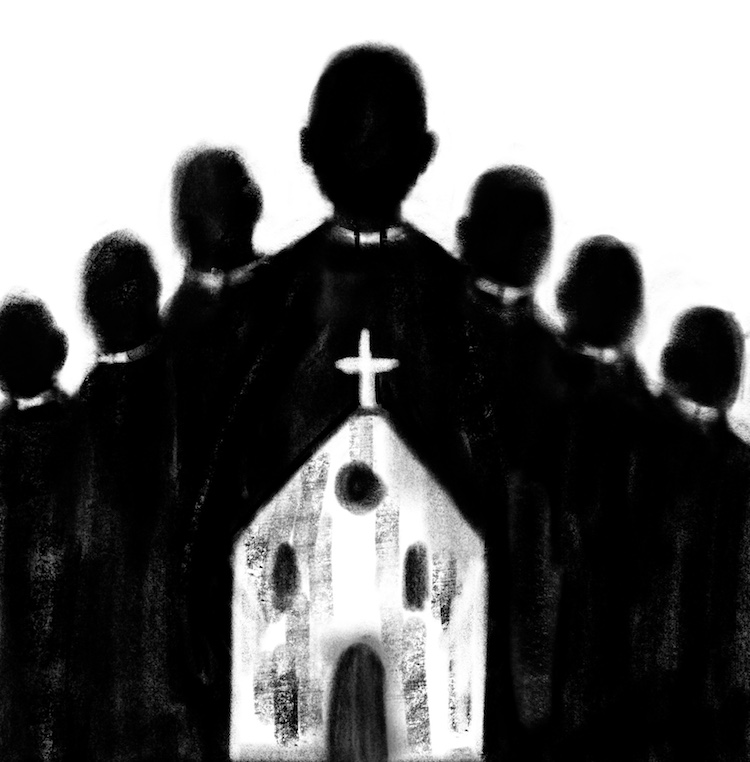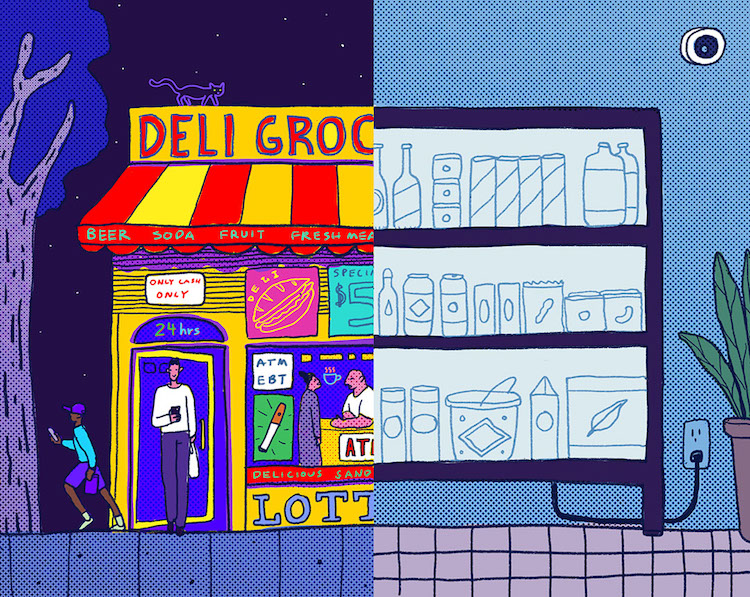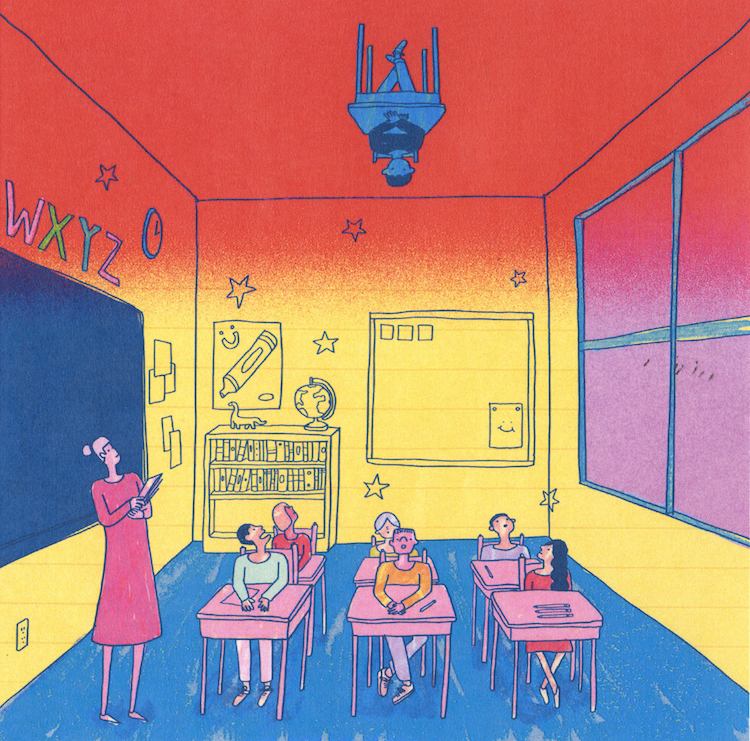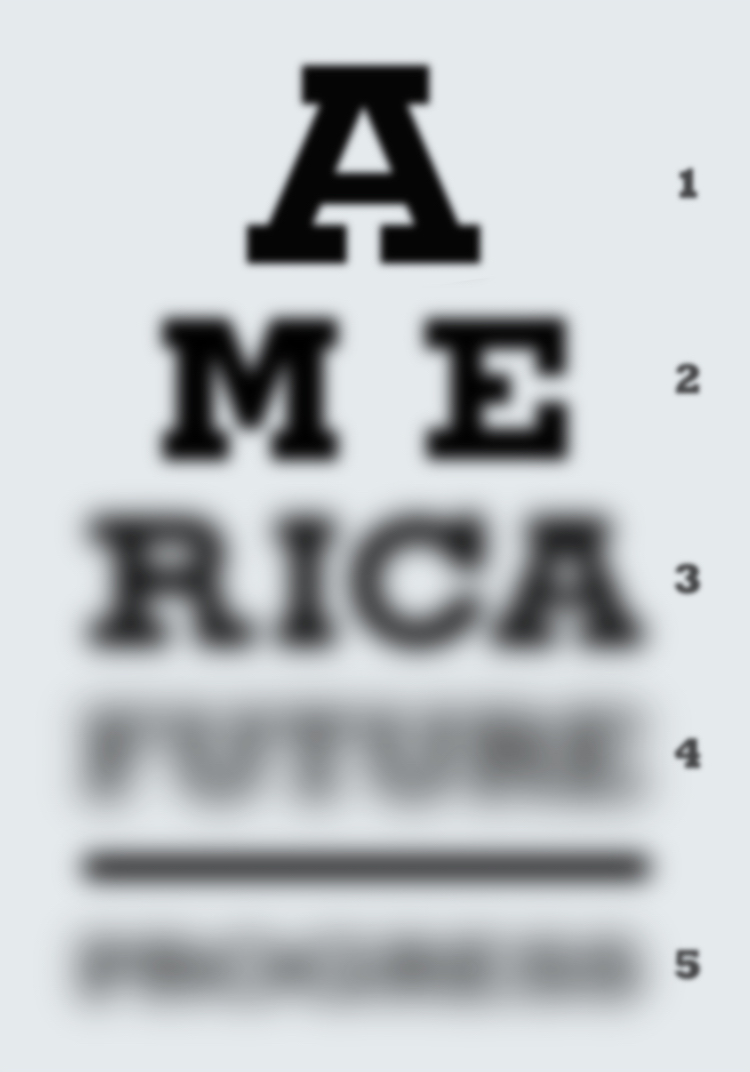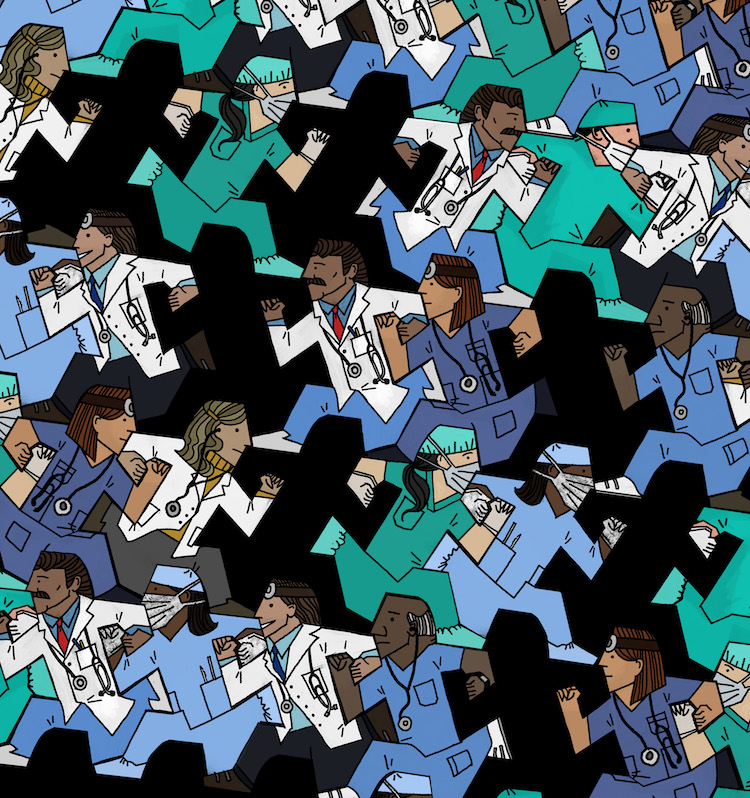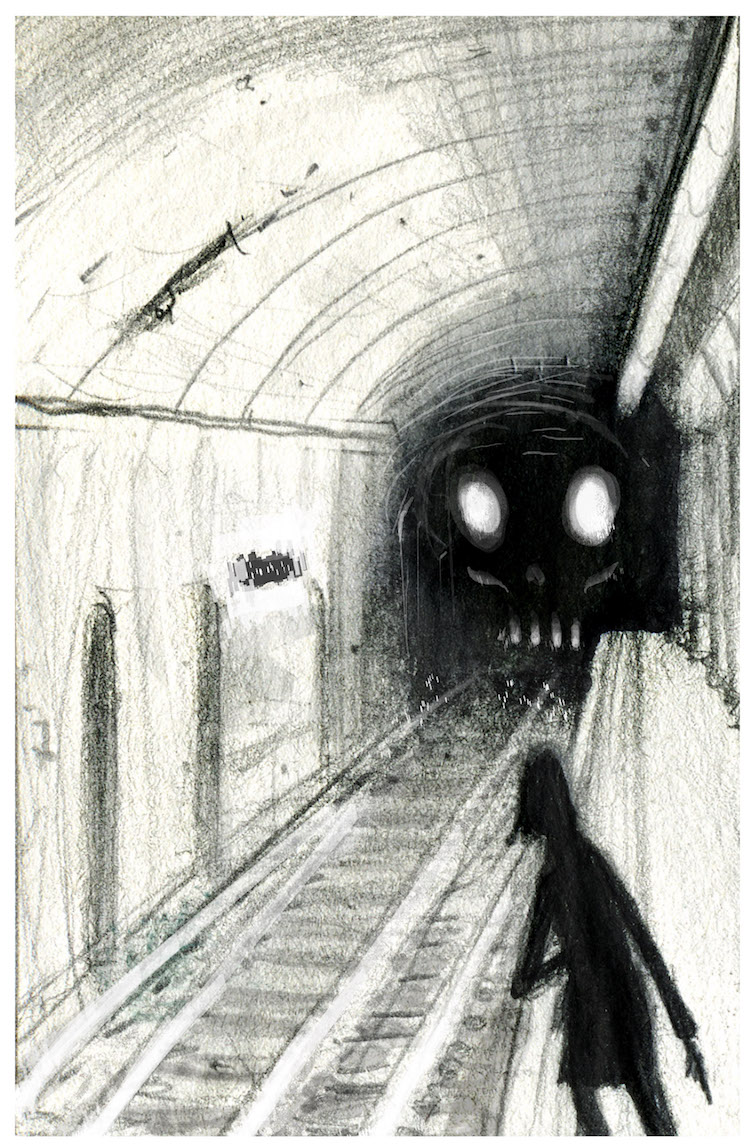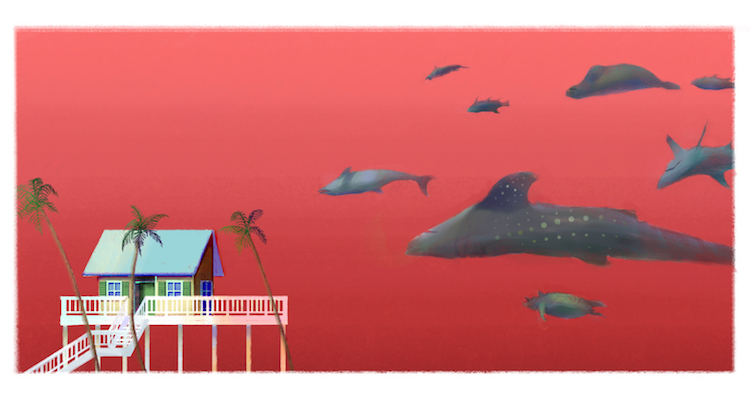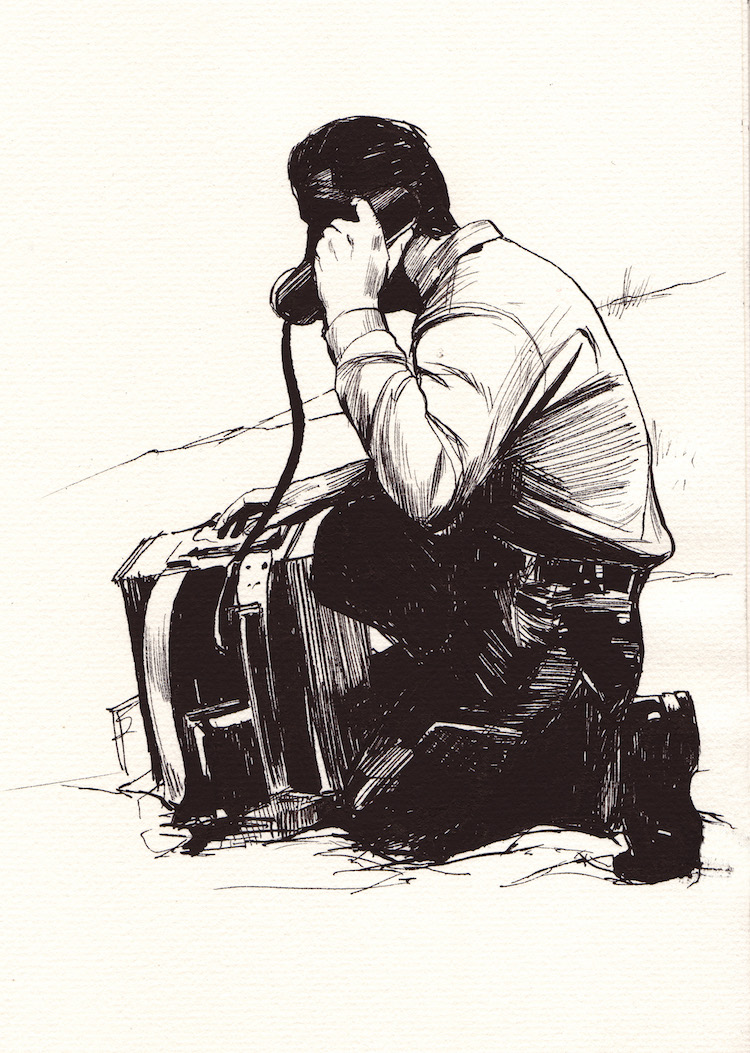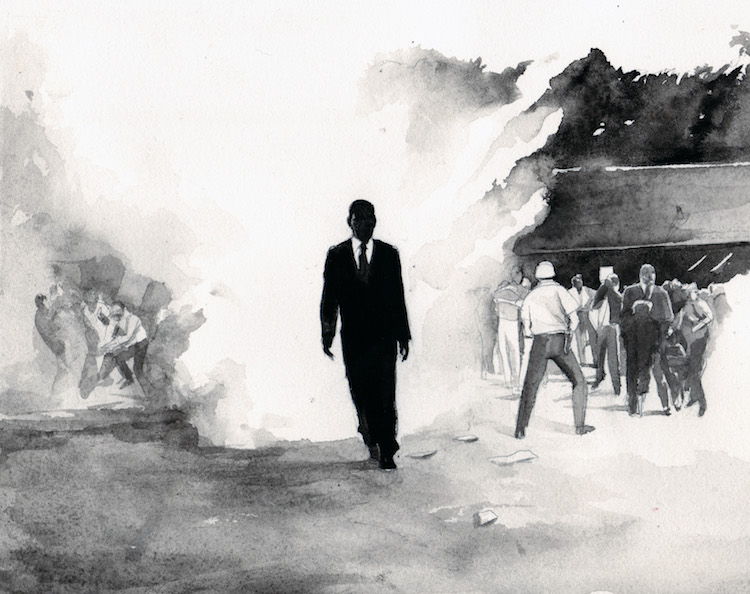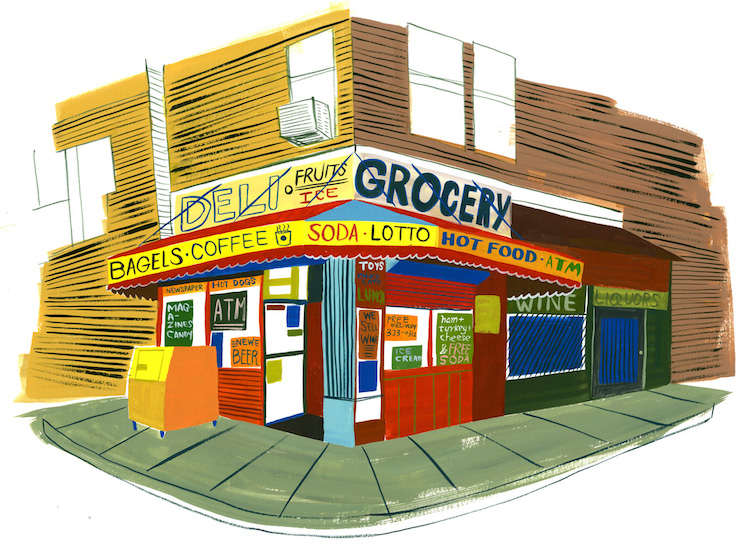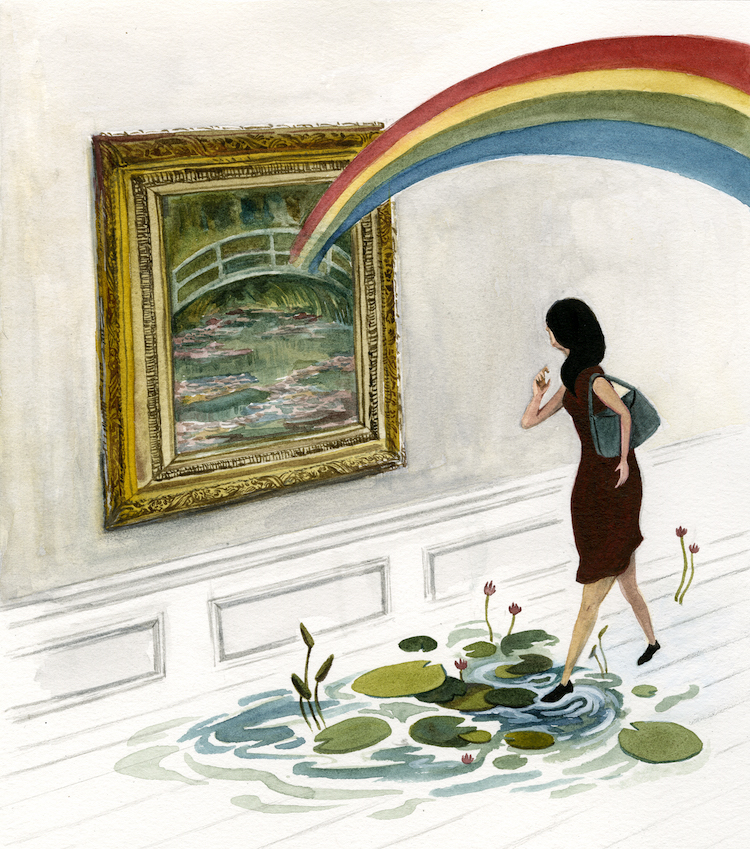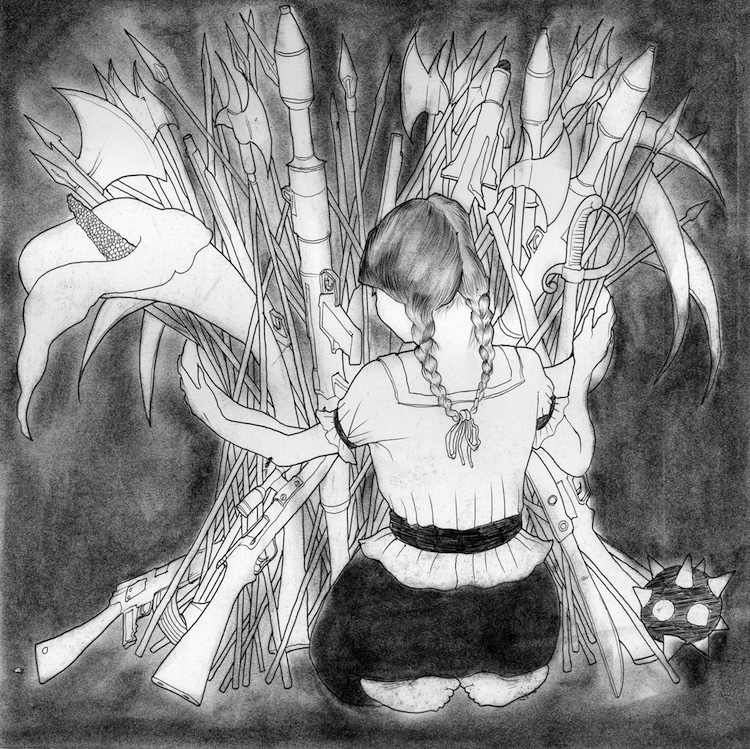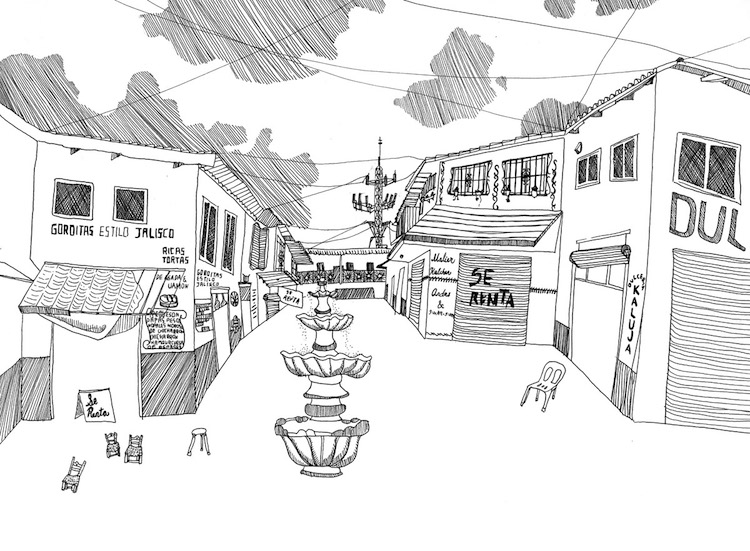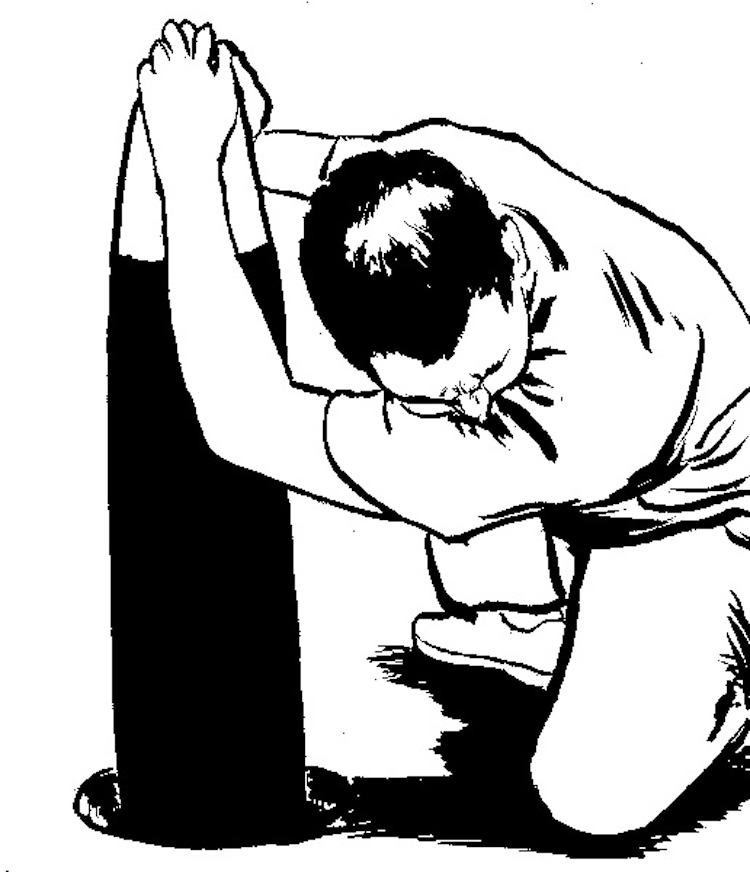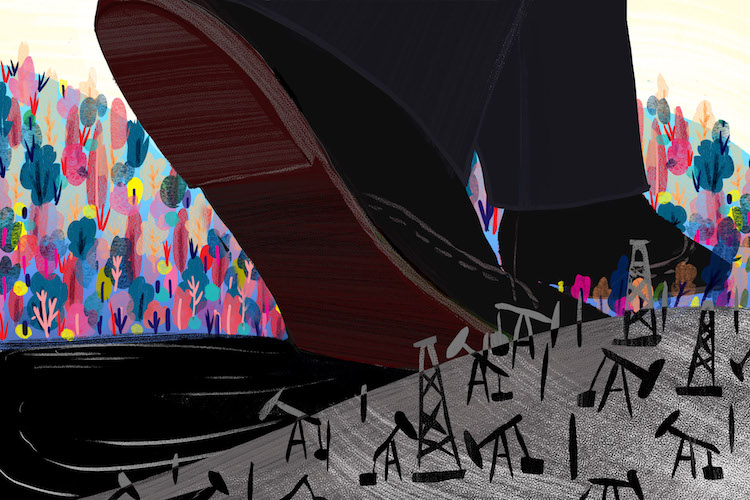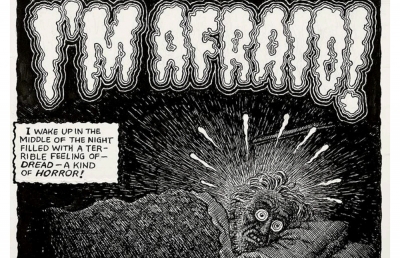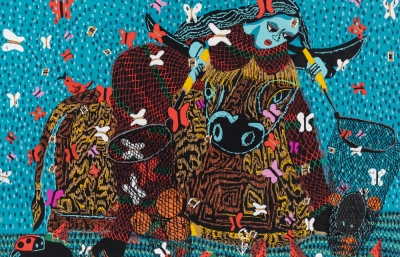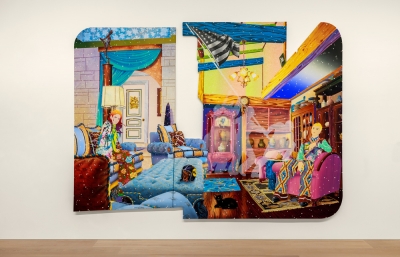It’s no hyperbole, but, yes, we love stories about editorial departments. Unlike our own, where we constantly comingle art and words on the same page, the New York Times Op-Ed department is on another level of flux, last-minute deadlines and quickly moving parts to connect stories and artwork. At the ArtCenter College of Design in Pasadena, there is a class that introduces students to this real-world scenario of tight deadlines and editorial pressure. The Op-Ed Illustration class is where students get a taste of the demanding realities of the editorial world. The goal? “For aspiring artists to learn efficient methods to generate ideas and contemporary storytelling while completing fast-paced assignments grounded in current events.” The class gives students a “live” assignment, where, in the end, a New York Times Art Director selects an individual’s work to appear in the paper.
The class is taught by Brian Rea, Art Director of the NY Times Op-Ed section from 2004 until 2008, and fellow instructor Paul Rogers, who each have a long history dealing with these sorts of newspaper deadlines, as well as having worked for major entities that crossover both digital and print worlds. We talked with Rea about the class, which teaches the realities of deadlines and acheiving the best work under pressure.

Juxtapoz: As someone who has worked on a monthly and quarterly magazine, but with only the occasional "super late-night deadline push" like a newspaper or op-ed section, can you walk me through some of the deadlines and stresses you had to face as art director of the NY Times Op-Ed section? I'm fascinated with that because, while I face deadlines, newspapers are much different magazines.
Brian Rea: The Opinion section of the NY Times is, of course, a daily section—for the Art Director, there is a deadline to close each day. I worked as the AD for about five years, and during my time on the page, we ran two pieces of art each day, four to eight pieces on Sunday. Between assigning, overseeing the design, managing the look of the section, reviewing portfolios, developing Op-Art ideas or long-term pieces for print and the online component… it’s a busy section. But you find a rhythm with it, and I was fortunate to have great assistant art directors over the years to help keep things running smoothly.
From an illustrator's side, working for the Op-Ed is always a challenge. The stress is simply based on time–generally less than 24 hours to work on each piece from sketch to finish. The e-mail will come in about 9 am California time, and you have about 15-30 mins to accept the assignment or the AD will move to someone else. You've got to read the article and send sketches by noon. An idea is chosen and final art needs to be at the Times by 4 pm. The minute you accept a job from the Op-Ed, the adrenaline kicks in and there is no time for anything else that day. You want to produce an image that will look good on the page and solve the problem, but you also know a lot of ADs, designers and illustrators will see it, so you’re aiming high for your ideas and execution. When it's finished and in the paper the next day, it always seems a little like a magic trick that the thing you did the day before is right there in the paper. Not every illustrator is suited for this type of assignment with these types of time constraints, but for those who are, this is the extreme sports of image-making.

How do you teach how to handle such deadline stress? What sort of parameters do you put on the students? Maybe walk us through how the course is set-up, because I assume it’s popular and students must really be engaged with both current events and great art application.
Paul Rogers and I team-teach a 14-week course at ArtCenter College of Design called Op-Ed. It simulates an illustrator’s experience working on projects for the Opinion page at the NY Times, or the experience of running an illustration practice working on multiple projects. We also discuss the art director’s role in each project too. We emphasize concepts and spend a great deal of time comparing effective sketching and smarter solutions to illustration problems. The goal is to get past the cliches and arm the students with unique, personal ideas and storytelling. During the first few weeks, we provide students with a few methods for generating ideas efficiently–we overlap projects. For instance, they might be developing sketches on a new assignment while working on the final for previous, approved sketches all in the same week.
We email projects to the students rather than assigning them in the classroom, which gives them less time to work on sketches and more closely simulates how illustration projects are assigned in the real world. We treat and critique the work on a professional level, not a student level. Along with the weekly assignments, students also work on a term-long Op-Art assignment, which is an illustrated and authored “project” generated completely by the end of each term. The students tackle a live assignment given to them by the current art directors at the Op-Ed page, and one student's piece is selected and appears in print, with credit and payment. It’s always a highlight of the term, and we’re really fortunate that the NYT and the art directors we’ve worked with over the years have provided this special opportunity. I think the students recognize the value and appreciate the chance to show their best work, which in turn, gives the ADs a chance to look at a lot of fresh new talent, all at one time.

What background do most of the students have? Are they into illustration? Is there a type of student who takes the course?
The majority are mid to upper-level illustration students who have an interest in being full-time illustrators and a desire to develop their idea-generating skills while refining their work visually.
The class is called Op-Ed, so all assignments come directly from the pages of the NYT Opinion section. The students become really familiar with the material, the columnists and the format of written opinion pieces, as well as how to break them down into a format that they can then sketch from.
We meet with about fifteen to twenty students each term for a 5-hour studio class every Monday for 14 weeks. Most class time is devoted to critiquing and lectures with examples, as well as guest critics from time to time. There's a lot of reviewing of work, both for our class and other projects the students bring in for review.

How much time elapses from the "live" assignment to the Op-Ed art director at the Times reviewing the students' work? I assume it's a few-hour process? Or a day?
The live assignment is exactly as it sounds, a live assignment with the NY Times. The art director at the Opinion page will send Paul and me the article the students will work from. We will review the article in class directly with the students (not with the AD’s) and discuss any comments or recommendations the ADs or editors have provided. The students then have roughly 24 hours to develop individual sketches and complete their individual solutions for the assignment. Paul and I save the NYT art directors the time of going through 20 students' sketches by handling the review step in class. Once we select a sketch with each student, they can work on the final either in class or in their studio. All finals have to be emailed (correct format, size, etc.) by a specific time the next morning. We bundle all 20 finished solutions and send them to the AD by the deadline.
It’s a bit like Christmas morning for the AD, who has 20 finals to choose from. They contact the students directly (Paul and I are not involved with the selection process at all). What is always special, though, is that the AD’s take time to provide written feedback on all submitted pieces. This is invaluable to the students–things they see in the work, recommendations on a piece, or other artists they might look at. It’s so rare for students to get direct feedback from an AD on their work, particularly from such high-level ADs who have incredibly busy schedules; but they deal with illustration every single day, so are absolute experts in communication with illustration. Their insight and comments are truly appreciated, and we are grateful they take the time to do so.

How many years have you taught this course? And what are some of the jobs your alumni have accepted after taking it? I love the scope of really smart, real-world application of time and skill that's provided.
We’ve been teaching this course for almost 10 years. It’s unique in that it’s taught from the perspective of both an illustrator and an art director at the same time, and we share the roles that each plays in a project. It becomes about management, people skills, presentation and, of course, ideas. These basic principles apply to so many other creative fields today. We’ve seen students go on to become full-time illustrators, designers and art directors, as well as work in motion graphics, entertainment and product design. The list goes on, and hopefully, this class is a tiny part of that journey.
Illustrators are a competitive group. When we see an illustration done by someone else, we all think, "I could have done that job, why didn't they call me for that?" I always have respect for the images I see on the Op-Ed page because I know all the ways it can go wrong. It's great to see your own work on the page, but the next best thing is to open the paper in the morning and see an illustration done by a former student.
For more information about ArtCenter, visit http://www.artcenter.edu/


